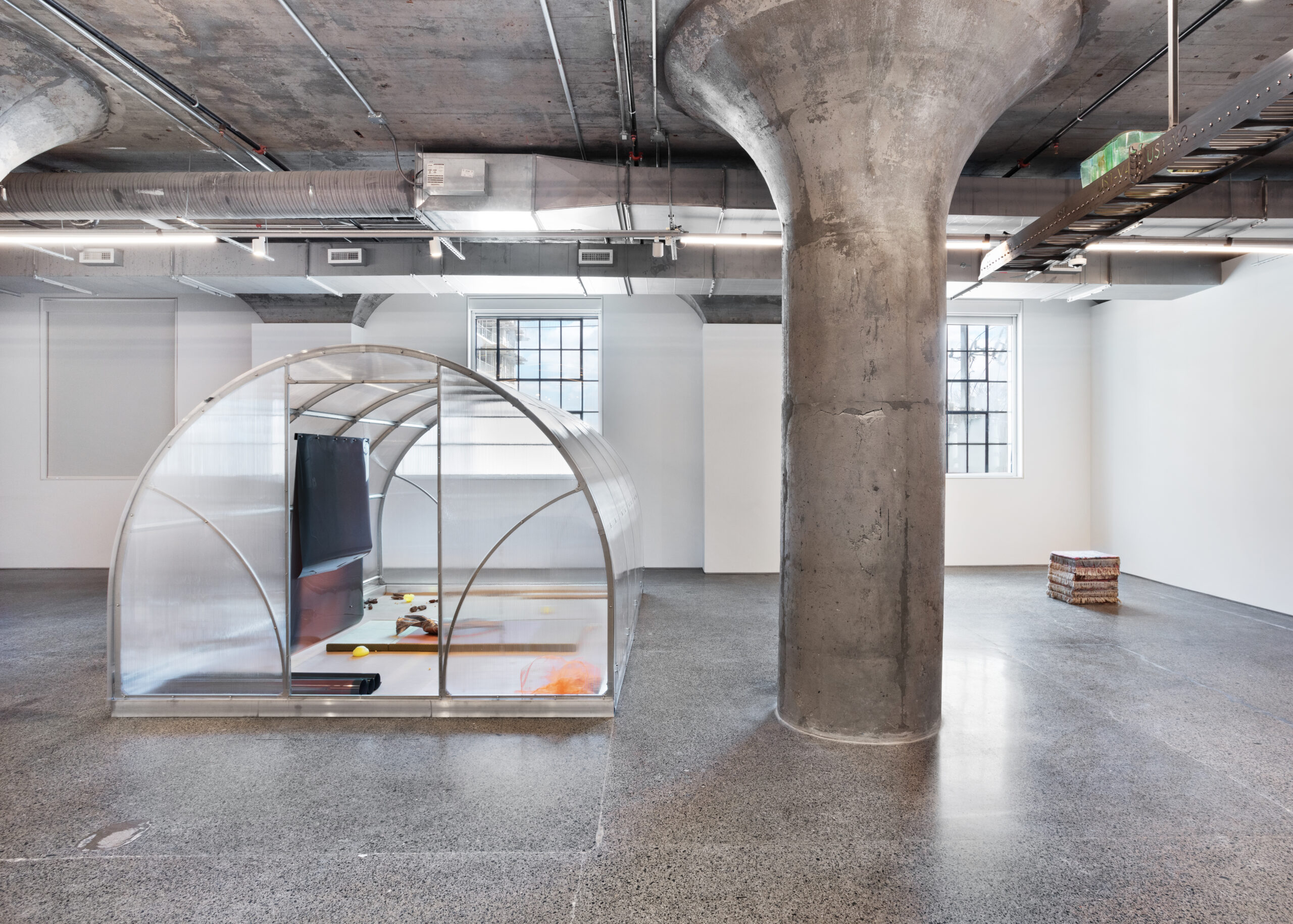Daylight pours into the vast, industrial second floor of Toronto’s Museum of Contemporary Art where, inside, a 13 foot greenhouse, erected in galvanized steel, imposes an architecture of its own upon the space. Through the greenhouse windows, the light descends and settles upon a curious ecosystem of organic and industrial forms arranged within it. The piece is Lotus L. Kang’s Receiver Transmitter (Butterfly), a site-specific sculptural installation commissioned for MOCA Toronto’s triennial exhibition, GTA24. Betraying a clear sense of interiority and exteriority, transformation and fixedness, presence and void, Receiver Transmitter (Butterfly) embodies a poetic materialization that defies singular interpretation.
For Kang the greenhouse as a form bears a symbolic resemblance to the human body as a permeable space. “I was thinking about this idea of a receiver transmitter as something that projects outwards but also something that receives and absorbs,” says Kang, “as a kind of analog for the body, as a kind of continually sensitive, porous vessel or container.” By complicating the boundary between interior and exterior space, the greenhouse invites impermanence, transformation, and contradiction.

The objects and materials arranged within the greenhouse similarly contain this poetic tension. Where ordinarily kelp knots are small organic food items, here an enlarged, cast aluminum kelp knot serves as a sculptural centerpiece. Lotus tubers are placed alongside kelp in what Kang describes as an “interplay between what is rooted and what is unrooted.” Pigmented silicon, a tatami mat, cast aluminum anchovies, adzuki beans, nylon thread, cored and dried apple slices—these are some of the materials which comprise Kang’s poetic arrangement.
Here, intentionally absent materials hold equal importance, the title itself alluding to butterflies though none are present. Similarly, a series of photographs taken on Kang’s 38th birthday in an act of communion with her grandmother who fled North Korea at the age of 38, are contained somewhere within the sculpture, but aren’t visible. In this way, Kang successfully materializes absence, void, and that which is intangible. “I’m really thinking about what is seen and not seen, what is held in the body overtime.”
“I’m really trying to engage a deeper, body knowledge kind of level—things that are maybe harder to articulate into language or experiences that are harder to articulate into language,” says the artist. At the same time, the piece is psychologically charged. “It has a lot to do with memory, time, and containing things,” says Kang, “this idea of what is held in the body overtime, and how what is held in the body also changes, sediments, accrues, loses. All these things—what is gained and what is lost.”
Elegant, expansive, and precise, Receiver Transmitter (Butterfly) culminates as a kind of poetry made physical. “To me this work feels like a poem,” says Kang, “each material feels like a word that’s both pointing to what the word is in the world, but then also deflecting and becoming many things. And as you move around it—and this is the power of sculpture—the words, or the materials, change in relation to each other.”

